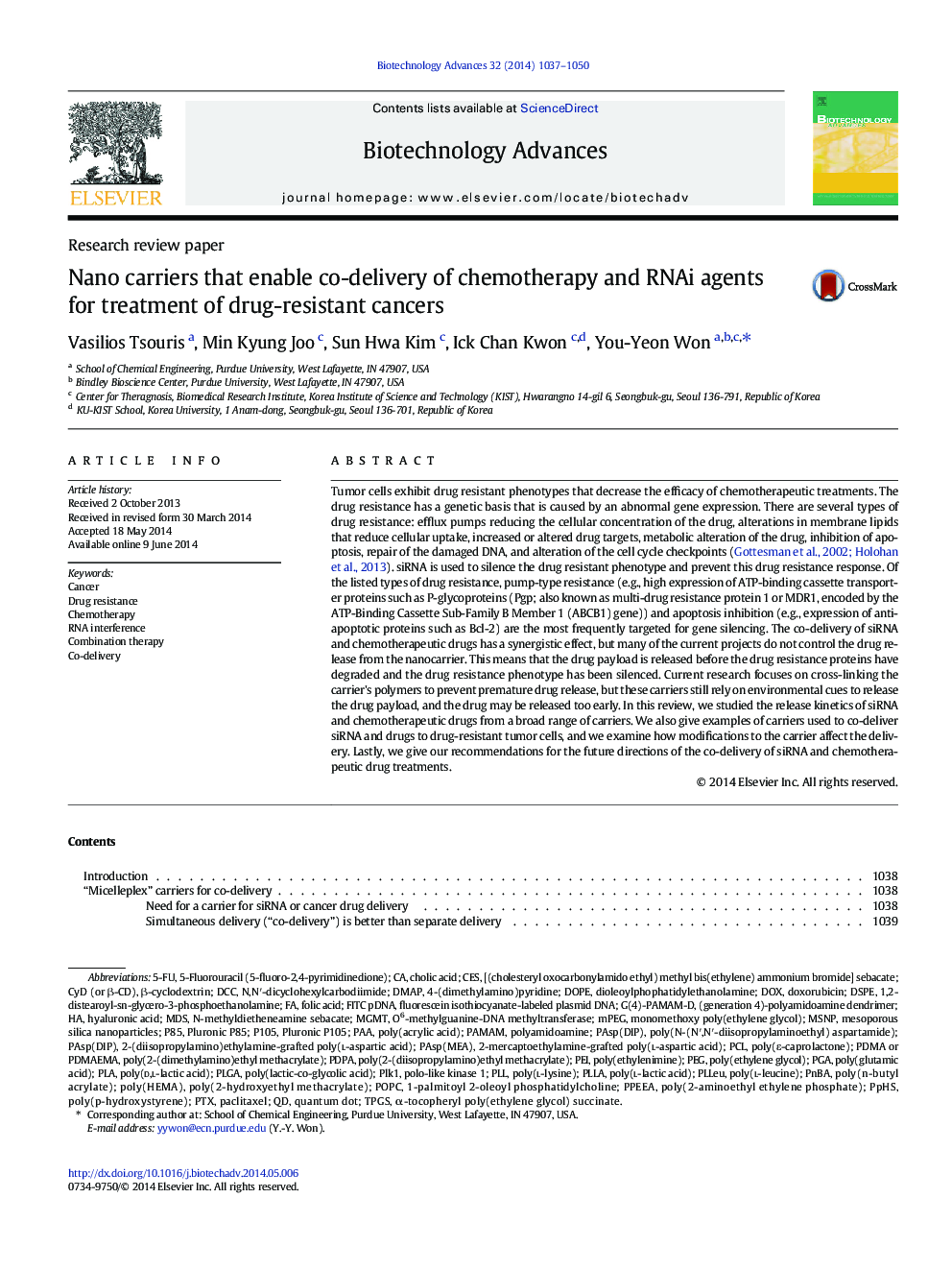| Article ID | Journal | Published Year | Pages | File Type |
|---|---|---|---|---|
| 14304 | Biotechnology Advances | 2014 | 14 Pages |
Tumor cells exhibit drug resistant phenotypes that decrease the efficacy of chemotherapeutic treatments. The drug resistance has a genetic basis that is caused by an abnormal gene expression. There are several types of drug resistance: efflux pumps reducing the cellular concentration of the drug, alterations in membrane lipids that reduce cellular uptake, increased or altered drug targets, metabolic alteration of the drug, inhibition of apoptosis, repair of the damaged DNA, and alteration of the cell cycle checkpoints (Gottesman et al., 2002 and Holohan et al., 2013). siRNA is used to silence the drug resistant phenotype and prevent this drug resistance response. Of the listed types of drug resistance, pump-type resistance (e.g., high expression of ATP-binding cassette transporter proteins such as P-glycoproteins (Pgp; also known as multi-drug resistance protein 1 or MDR1, encoded by the ATP-Binding Cassette Sub-Family B Member 1 (ABCB1) gene)) and apoptosis inhibition (e.g., expression of anti-apoptotic proteins such as Bcl-2) are the most frequently targeted for gene silencing. The co-delivery of siRNA and chemotherapeutic drugs has a synergistic effect, but many of the current projects do not control the drug release from the nanocarrier. This means that the drug payload is released before the drug resistance proteins have degraded and the drug resistance phenotype has been silenced. Current research focuses on cross-linking the carrier's polymers to prevent premature drug release, but these carriers still rely on environmental cues to release the drug payload, and the drug may be released too early. In this review, we studied the release kinetics of siRNA and chemotherapeutic drugs from a broad range of carriers. We also give examples of carriers used to co-deliver siRNA and drugs to drug-resistant tumor cells, and we examine how modifications to the carrier affect the delivery. Lastly, we give our recommendations for the future directions of the co-delivery of siRNA and chemotherapeutic drug treatments.
